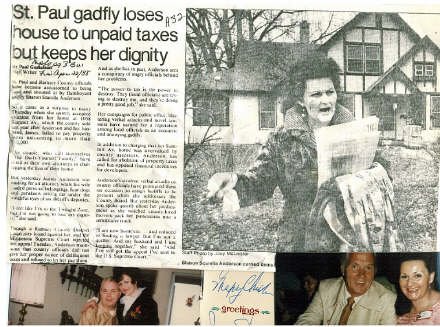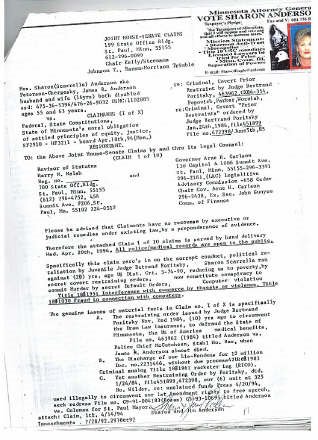for historic homes, the tour had to be reworked at the last minute, because offers have been made on several of the homes.
"Dayton's Bluff has a really unique housing stock. It's what makes us a unique neighborhood," said City Council President Kathy Lantry, who represents the neighborhood and has broad authority over whether a house is razed. "We don't want to lose one of our assets."
Dayton's Bluff neighbor Amy Handford agrees. In 1988, she and her then-husband bought a run-down Victorian for $35,000 and restored it to its current crimson, French blue and charcoal splendor. It has been appraised at more than $400,000.
"Sometimes, you've just got to draw a line," Handford said of her neighborhood's homes. She said frequently cited problems such as squatters and copper thefts aren't always cause for tearing down a house.
"That is because of people's behavior. It isn't the house," Handford said. "We've always had a really strong neighborhood."
By contrast, the North End's District 6 and lower East Side's Payne-Phalen planning councils — two of 17 district councils citywide — saw a combined 44 homes leveled in 2007. The other 15 planning areas averaged a little more than two each.
Council Member Lee Helgen, whose 5th Ward encompasses parts of both the North End and lower East Side, said decisions on whether to raze properties are based on a number of factors, including the home's condition and whether the property is a nuisance for neighbors.
But those neighborhoods, Helgen added, are not filled with historic homes — unlike Dayton's Bluff. They were working-class areas built on poor, sometimes peaty soil, and sinking foundations have led to structural problems.
"They were never built to last 100 years, anyway," Helgen said.
Kessler said the city's aggressive stand toward dilapidated homes is paying dividends. Homeowners now take the city's threats to fix up substandard housing seriously, and several homes under city abatement orders are being renovated.
Sixth Ward Council Member Dan Bostrom, who represents much of the East Side (and sometimes is referred to as "Demolition Dan" around City Hall), said he supports demolitions as a way to help flagging neighborhoods.
"I'm not pushing for demolitions. That's not my big thing," Bostrom said. "But you've either got to fix it or it's got to be taken down. They can't simply linger out there and be a drag on the neighborhood."
More than 100 homes have been razed in St. Paul since the beginning of last year.
"I think people need to know that the city is trying to maintain the value in their neighborhoods," Bostrom said.
What's left behind raises other questions.
Once the housing market picks up, the city expects investors to buy the vacant lots for new construction. Discussions are under way about what kind of design standards, if any, should be in place for those new homes.
Bostrom, Helgen and Lantry all support some sort of design standards to ensure the new homes are in keeping with the neighborhoods. What hasn't been decided are what those design standards should be. Should they include the garage's location or the home's orientation on the lot? Should they go so far as to say how many stories a new home should be?
"It's to protect the neighbors that continue to live there," Bostrom said. "I think a lot of these folks have spent their life savings on these homes, and they'll want to protect that asset. I think we've got a responsibility to try to help them."
Jason Hoppin can be reached at 651-292-1892.




No comments:
Post a Comment